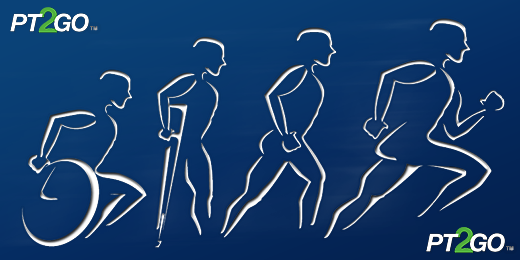Greetings Folks!
My name is Jessica Schwartz and I’d like to take a moment to introduce you to PT2Go!
You can find the mission statement here; but first, I’d like to share how PT2Go has organically developed over the last several years.
Conceptually, I thought of this intellectual space of PT2Go as I entered Orthopaedic Residency in 2010. During residency, I learned to truly appreciate the multidisciplinary communication, candor and enthusiasm across all aspects of medicine. After 10 years of formal education and 3 degrees later, I can honestly say that I was never a great self-directed learner.
During residency, I learned how to reason and think differently. In my first 3 months of intensive learning and direct supervised practice, I had become a completely different clinician than I was the day I walked across the stage at graduation and donned that famous doctoral hood. Despite the lack of sleep, buckets of coffee, and stress of having one too many things on my plate at any given time it was an honor and a joy to have learned and grown clinically with my class of residents.
After graduation from residency, I had a dilemma. I didn’t have someone telling me what to learn, how to learn, and there was no standing on the firing block for weekly peer review and feedback.
I had become incredibly efficient at work and I had rejuvenated my long lost social life with family and friends, but there was something missing. The work, life…learning balance. Where would I fit the time in for learning? How would I do it on my own? How would I do it efficiently?
THIS is where PT2Go comes in.
My goal is to promote the field of Physical Therapy in a collaborative and multidisciplinary way. I hope that by sharing some of my own self-directed learning experiences: the good, the bad, and the ugly (and believe you me I’m talking ugly!) I can assist in fostering interdisciplinary connections and conversations similar to the connections I made during my time as a resident.
Here is what you can expect*:
- • High Yield Evidenced Based information that you can attain on-the-go
- • International and domestic contributors providing thought provoking and energetic guest pieces
- • Opinion (Op-Ed) articles that may push the envelope, foster passionate conversation, and encourage thinking outside of the box
- • Tips on how to use and integrate Social Media and Medicine (#SoMe) for the Millennial and Generation X Learner
- • A series on my own Post-Concussive-Syndrome experience. The Dichotomy of The Doctor Becoming The Patient: A Shared Experience of Personal Moments with an Evidenced Based Twist
- • Concussion Story: A collaborative space for survivors and health care professionals to gain insight into the lives of their patients
- • Links to Clinical Prediction Guidelines and tips on how to access the information we need in the clinic in real time
- • A holistic approach to food and nutrition in medicine: taking care of ourselves, food and environmental responsibility, and how it relates to our patients
- • Collaborative Case Studies
And much, much, more…
So cheers to you for coming on this self-directed learning experience with me. I hope to share my passion and authentic curiosity for medicine as well as facilitate passionate conversation with the intention of creating better clinicians and self-directed learners all around the world.
Enthusiastically,
Jess
Note*: Initial 3-5 blog postings will be primarily related to Concussion
PS- As promised, I did say Evidenced Based right? My first blog post is written is in a story based format. Here are some links establishing the power of storytelling in medicine and business:
-
Calman, K. (2001). “A study of storytelling, humour and learning in medicine.” Clin Med 1: 227-229.
-
Becker, K. A. and K. Freberg (2014). “Medical student storytelling on an institutional blog: A case study analysis.” Med Teach 36(5): 415-421.
-
Schwartz, M. R. (2012). “Storytelling in the digital world: achieving higher-level learning objectives.” Nurse Educ 37(6): 248-251.
-
Stephens, G., et al. (2010). “Speaker–listener neural coupling underlies successful communication.” Proc Natl Acad Sci U S A. 107(32): 14425-14430.
-
Scott, S., et al. (2013). “Protocol for a systematic review of the use of narrative storytelling and visual-arts-based approaches as knowledge translation tools in healthcare.” Syst Rev 2: 1-7.
-
Hensel, W. and T. Rasco (1992). “Storytelling as a method for teaching values and attitudes.” Acad Med 67(8): 500-504.
-
Diagnosis Goes Low Tech By Dinitia Smith Published October 11, 2003. Accessed May 8, 2014. http://www.nytimes.com/2003/10/11/arts/diagnosis-goes-low-tech.html
-
Lead with a Story: A Guide to Crafting Business Narratives That Captivate, Convince, and Inspire Truth by Paul Smith. Accessed May 8, 2014. http://www.leadwithastory.com/
-
The Power of Story Telling as seen in PT In Motion Published July 7, 2011. Accessed May 8, 2014. http://stephaniestephens.com/wp-content/uploads/2011/07/0312_PTM_Storytelling_MedRes4.pdf
-
George, D. R., et al. (2014). “How a creative storytelling intervention can improve medical student attitude towards persons with dementia: A mixed methods study.” Dementia (London) 13(3): 318-329.
-
Cavazza, M. and F. Charles (2013). “Towards Interactive Narrative Medicine.” Stud Health Technol Inform 184: 59-65.



The ending totally made this blog post for me. Seriously! Providing evidence for the storytelling method of your blog post. I love the creativity!
Thanks John! Slow and steady wins the race 🙂